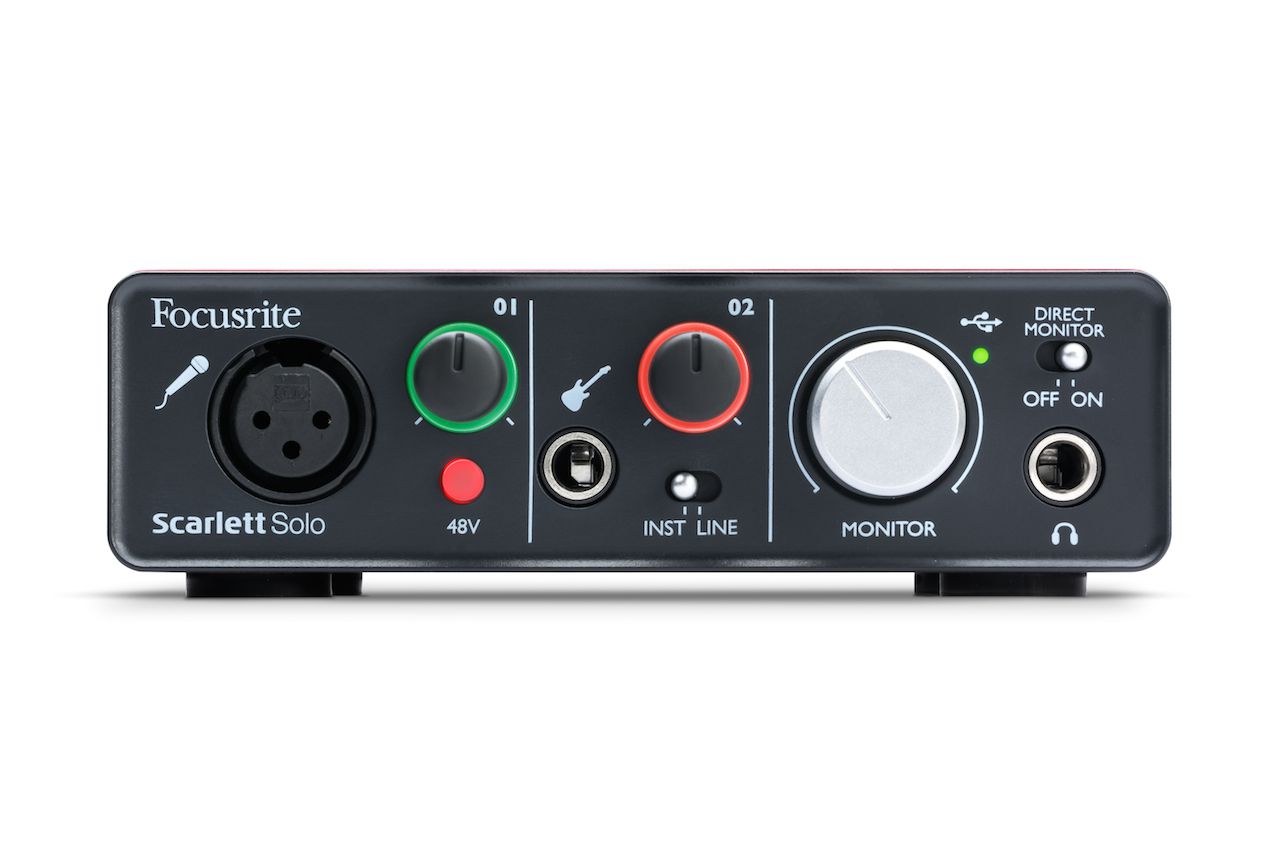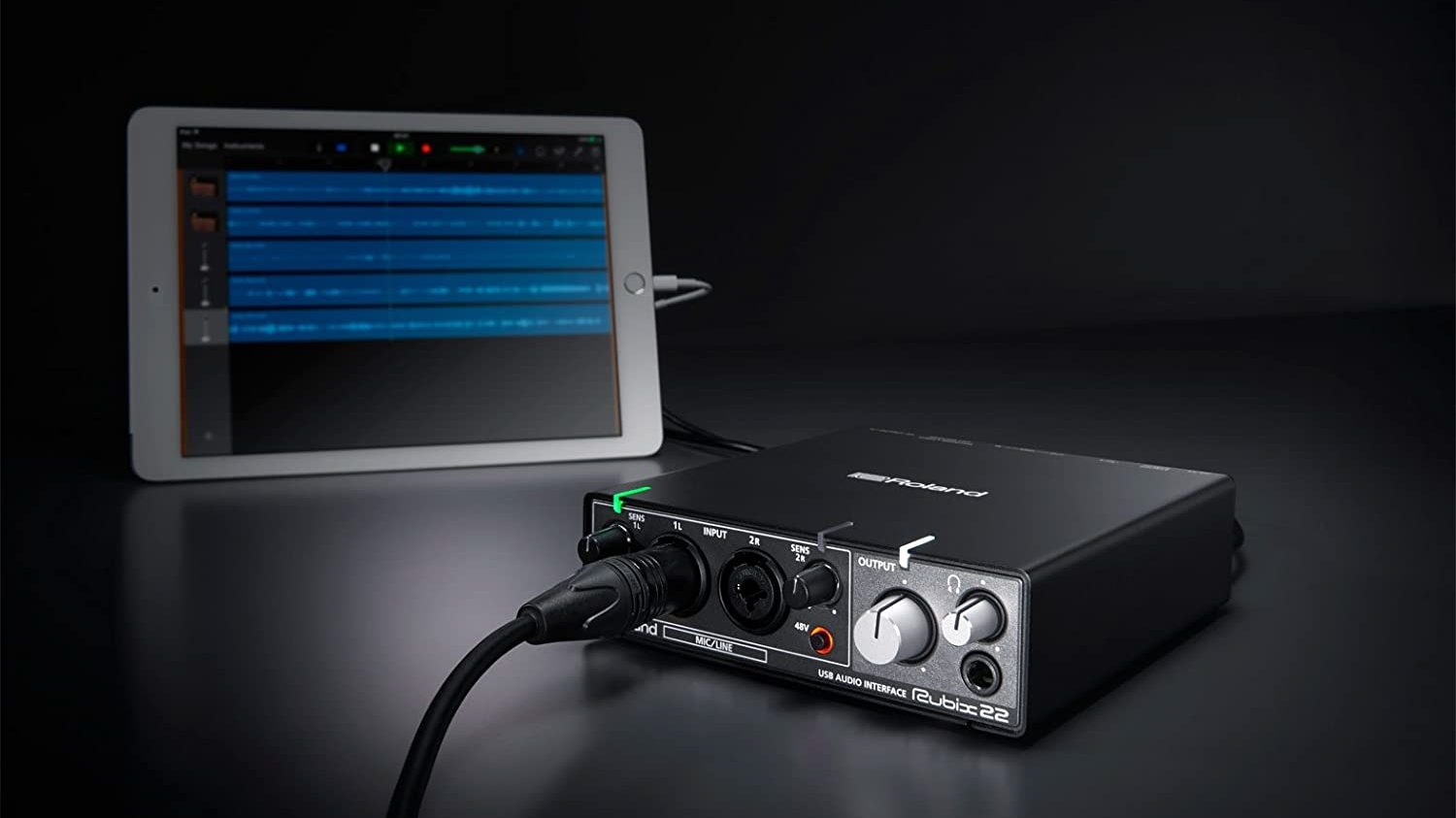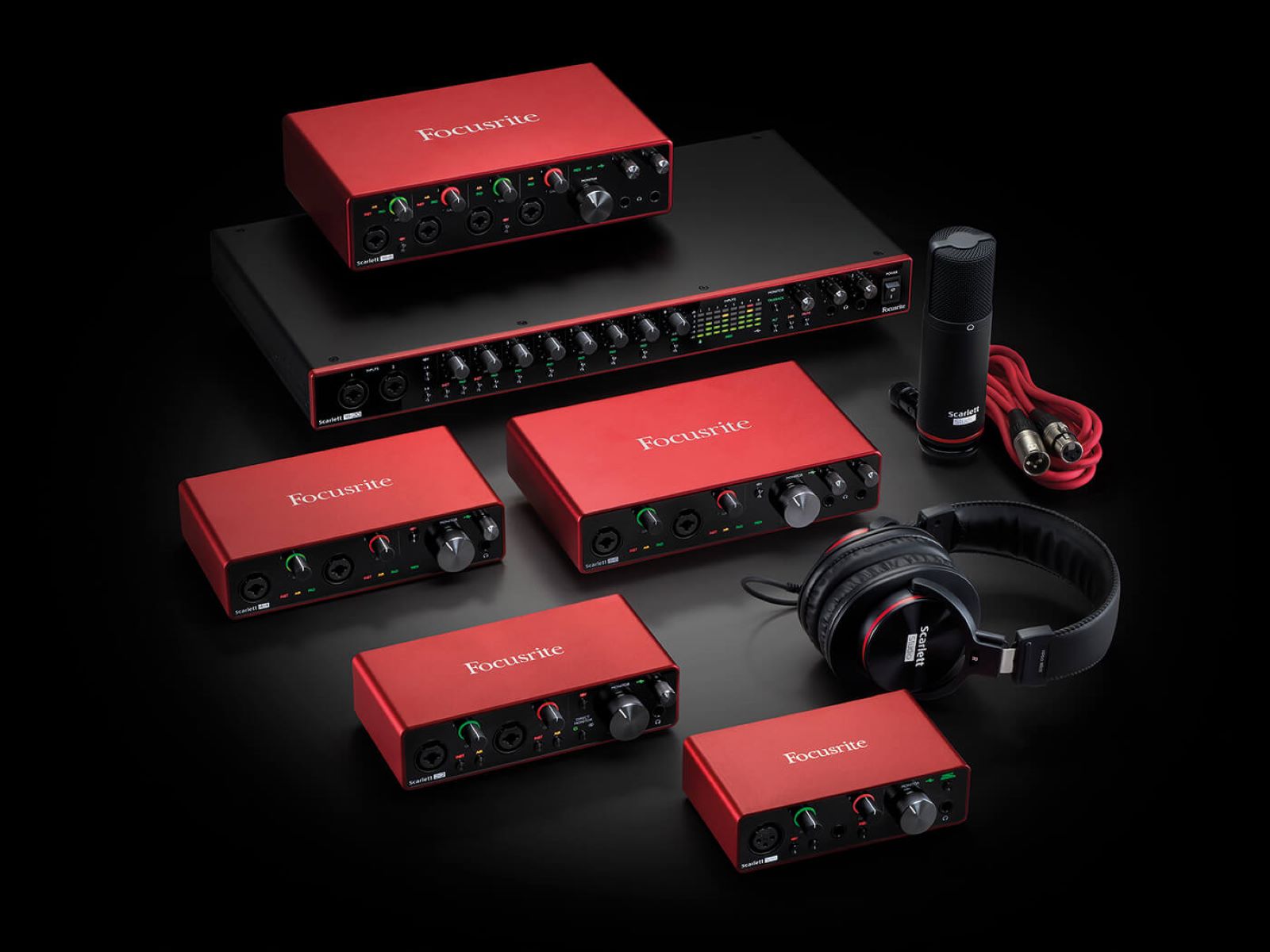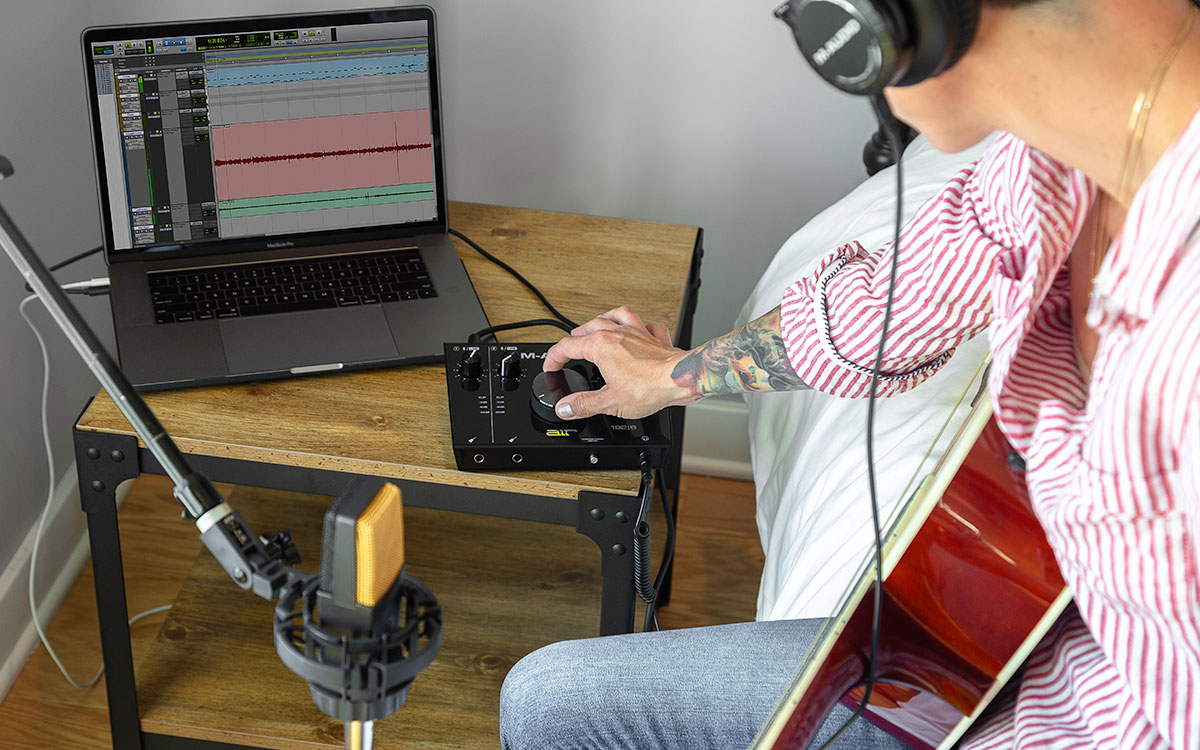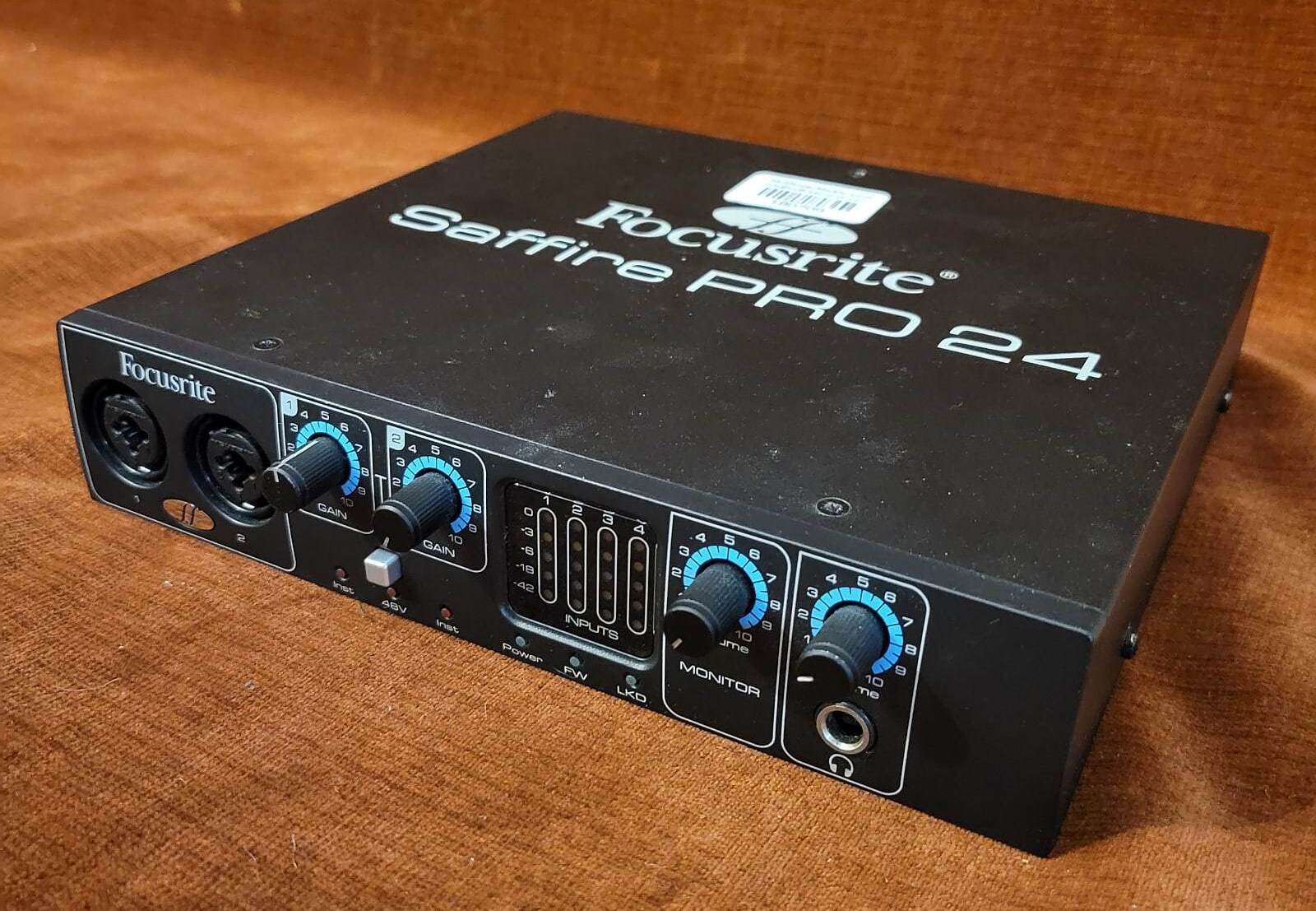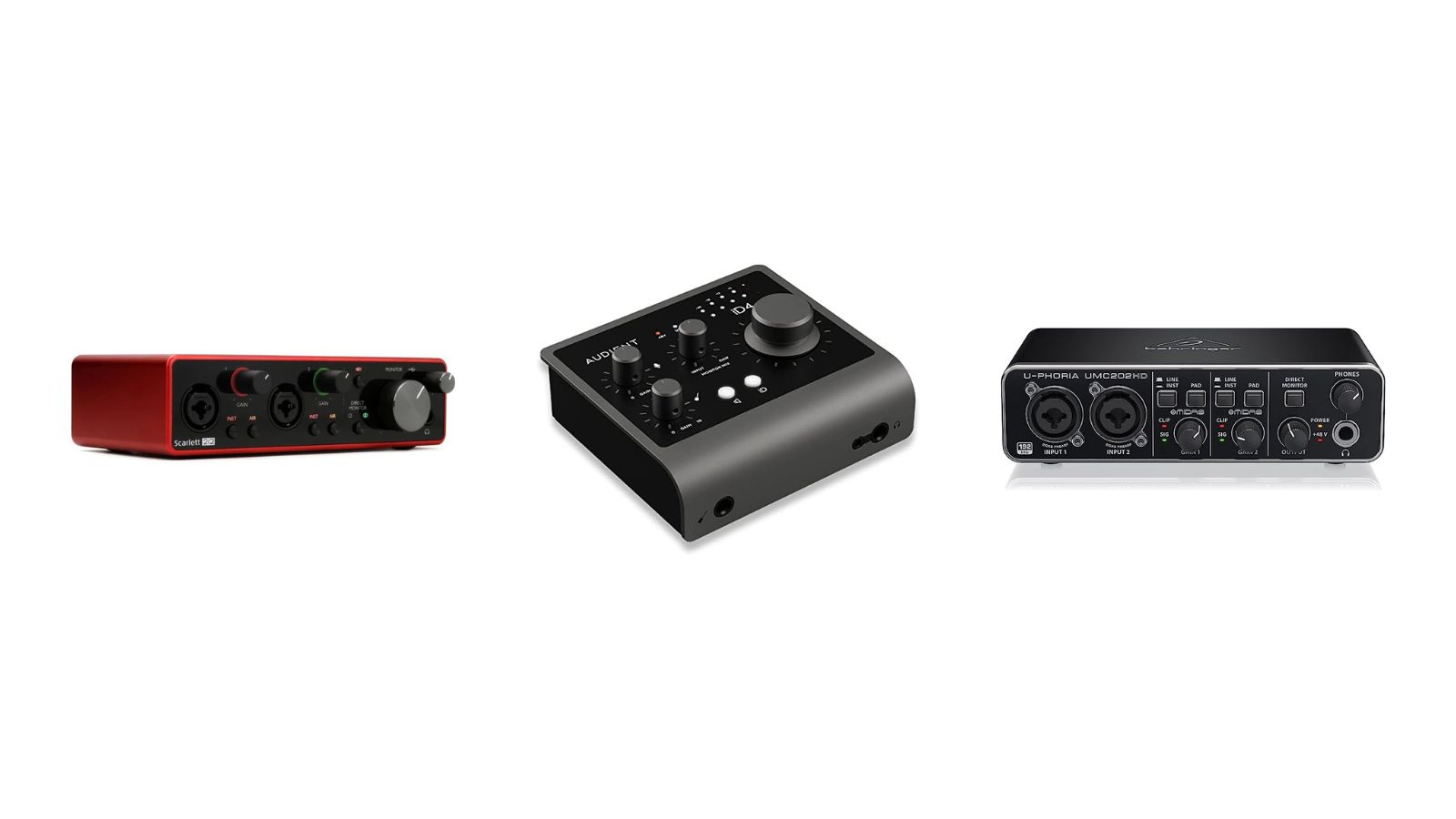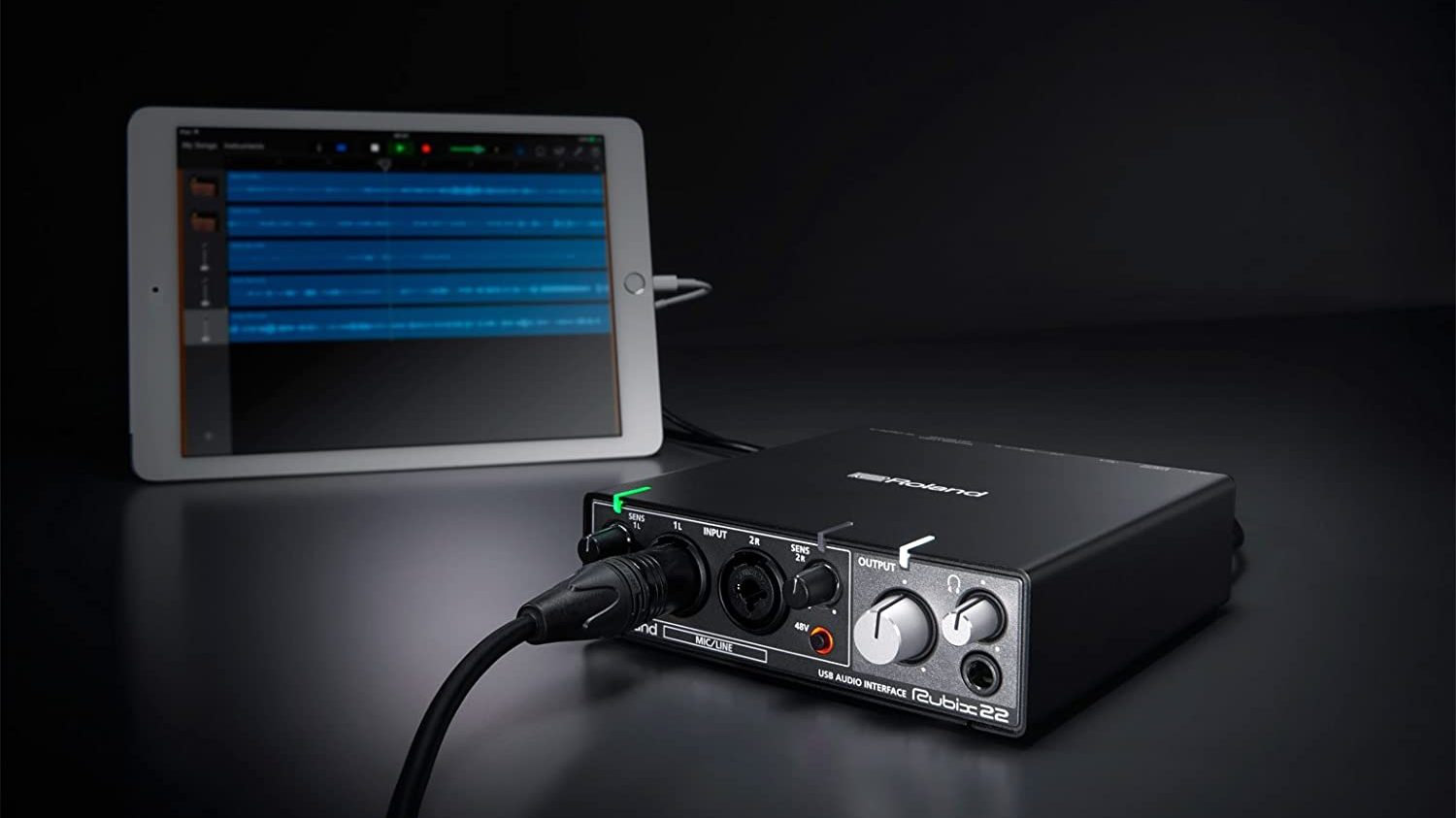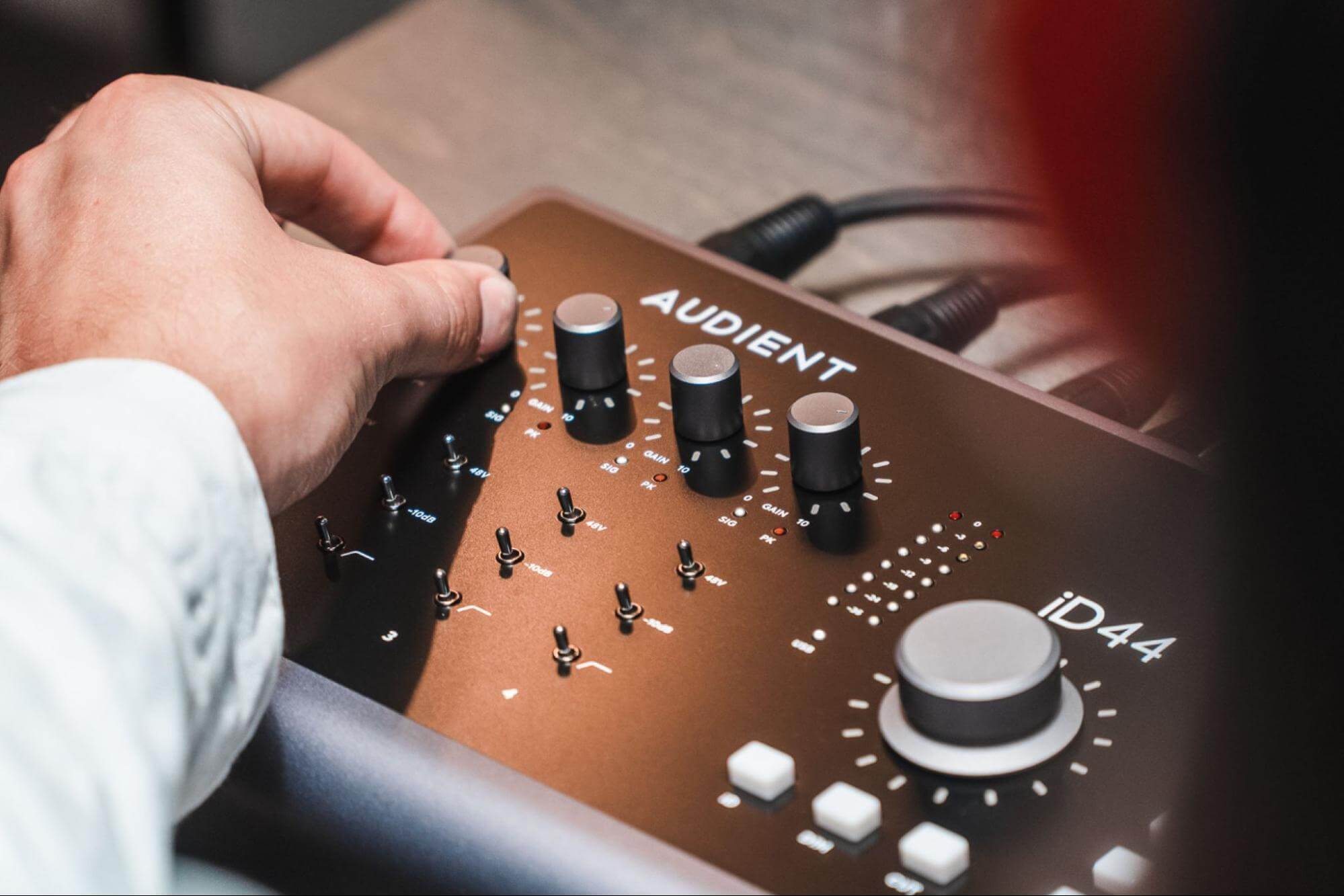Home>Production & Technology>Audio Interface>What Are Inserts For On An Audio Interface
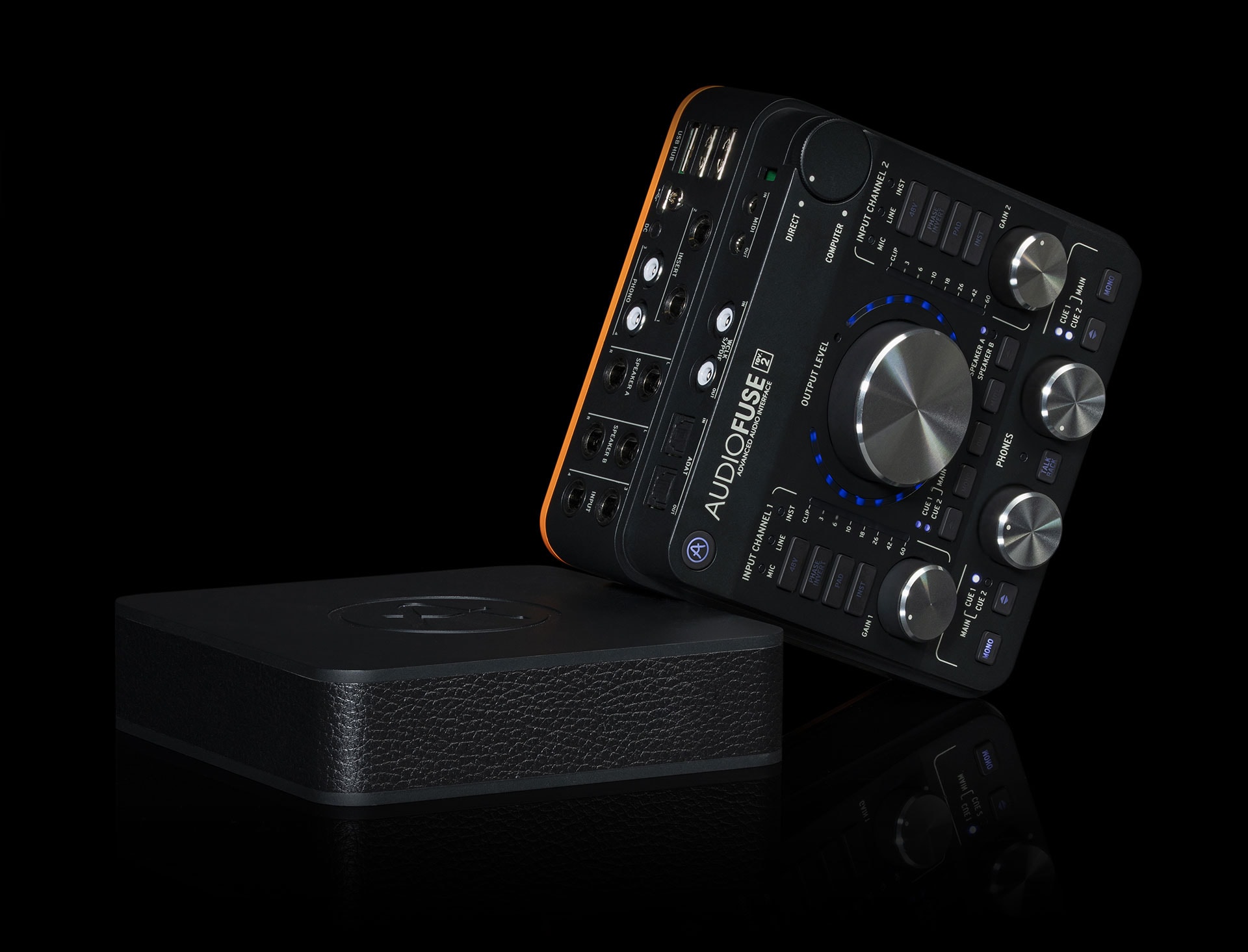

Audio Interface
What Are Inserts For On An Audio Interface
Modified: February 19, 2024
Discover the purpose of inserts on an audio interface and how they enhance the functionality of your recording setup. Explore the benefits of using an audio interface for optimal audio performance.
(Many of the links in this article redirect to a specific reviewed product. Your purchase of these products through affiliate links helps to generate commission for AudioLover.com, at no extra cost. Learn more)
Table of Contents
Introduction
Welcome to the world of audio interfaces! Whether you’re a musician, podcaster, YouTuber, or audio enthusiast, you’ve probably come across the term “audio interface” in your quest for high-quality sound recording and playback. An audio interface is an essential tool for connecting your instruments, microphones, and speakers to your computer or recording equipment. It serves as the bridge between the analog and digital realms, allowing you to capture and process audio in a professional manner.
Within the realm of audio interfaces, there are numerous features and functionalities to explore. One such feature is the inserts. Inserts are a versatile tool that can greatly enhance your audio recording and mixing capabilities. They provide a way to integrate external hardware processors into your signal chain, allowing you to add various effects and manipulate your audio in creative ways.
In this article, we will delve into the world of inserts on audio interfaces. We will explore what inserts are, how they work, and discuss the benefits of using them. Whether you’re a seasoned audio engineer or just starting out in the world of audio production, understanding inserts will greatly expand your sonic possibilities. So, let’s dive in and explore the fascinating world of inserts on audio interfaces.
Purpose of Audio Interfaces
Before we dive into the details of inserts, let’s first understand the broader purpose of audio interfaces. Simply put, an audio interface is a device that converts analog audio signals into digital data that can be processed and recorded by your computer or recording equipment. It also performs the reverse function of converting digital audio signals back into analog signals for playback through your speakers or headphones.
Audio interfaces are essential for achieving high-quality audio recordings and playback. They provide superior sound quality compared to the built-in sound cards found in most computers. Additionally, they offer a range of input and output options, allowing you to connect various audio sources, such as microphones, instruments, and other external hardware.
With the rise of home recording studios and digital audio workstations (DAWs), audio interfaces have become a crucial tool in the audio production process. They provide low latency, high-resolution audio capture, and offer features like phantom power for condenser microphones, MIDI connectivity, and headphone monitoring.
Furthermore, audio interfaces often come with software control panels that allow you to adjust settings such as sample rate, buffer size, and input gain, providing you with precise control over your audio recordings.
Overall, the purpose of an audio interface is to act as the central hub for bringing audio signals into and out of your computer or recording setup. It ensures that your audio is captured and reproduced with the highest level of fidelity, enabling you to create professional-grade recordings and mixes.
Overview of Inserts
Inserts are an important feature found on many audio interfaces. They provide a way to integrate external hardware processors into your audio signal chain, allowing you to add effects and manipulate your audio with precision and control. Inserts are typically found on audio interfaces that have dedicated input/output (I/O) connections for external processing units.
When you hear the term “insert,” you might think of an audio plug or cable. While inserts do involve physical connections, they refer to a specific set of connections that enable you to insert external audio processors directly into a signal path.
Typically, inserts are in the form of 1/4-inch TRS (Tip-Ring-Sleeve) jacks, which are commonly used for connecting audio equipment. These inserts are typically located on the front or back panel of the audio interface and provide a way to route audio signals to external hardware devices.
It’s important to note that not all audio interfaces come equipped with inserts. However, if you have an interface with this feature, you have the advantage of expanding your sonic capabilities by integrating external processors into your workflow.
By connecting external hardware processors, such as compressors, equalizers, or effects units, to the inserts on your audio interface, you can apply these processors to specific tracks or the entire mix during the recording or mixing process. This allows for greater flexibility and control over the sound shaping and manipulation.
While inserts are primarily used for processing audio signals, some audio interfaces also have inserts on their headphone outputs. This feature allows for the connection of external processors or headphone amplifiers, enhancing the audio quality and personal monitoring experience.
Overall, inserts on audio interfaces serve as a gateway to integrating external hardware processors into your signal chain, giving you the ability to shape and enhance your audio in unique and creative ways. They offer flexibility, control, and the opportunity to explore a wide range of sonic possibilities.
What are Inserts?
Inserts, as mentioned earlier, are a specific set of connections found on audio interfaces that allow you to integrate external hardware processors into your audio signal chain. They are essentially a way to insert these processors directly into the audio path.
Inserts are typically used in professional audio production environments, including recording studios and live sound setups, but they can also be utilized in home studios for those looking to expand their creative possibilities.
When you connect an external hardware processor to an insert on your audio interface, you are essentially creating a break in the audio signal flow. This break allows you to send the audio signal to an external device for processing before it continues along the original signal path.
Inserts on audio interfaces usually consist of a stereo send and return connection. The send portion sends the audio signal from the audio interface to the external processor, and the return portion brings the processed audio signal back into the signal chain. This setup allows you to apply effects or manipulate the audio in real time.
It’s important to note that inserts are typically designed for line level signals rather than instrument level signals. If you need to connect an instrument-level signal to an external processor, you may need to use a direct box or an impedance-matching adapter.
Whether you’re using hardware compressors, equalizers, effects units, or any other outboard gear, inserts provide a convenient and efficient way to incorporate these processors into your audio recordings or live performances.
The flexibility of inserts allows you to utilize different combinations of processors and experiment with various signal routing configurations. For example, you can choose to insert a compressor on a specific vocal track or apply equalization to a guitar recording. The possibilities are endless and entirely up to your creative vision.
Overall, inserts are a powerful tool that opens up a world of creative opportunities in audio production. They allow you to expand your sonic palette by incorporating external hardware processors and provide you with precise control and manipulation over your audio signals.
Types of Inserts
There are two main types of inserts commonly found on audio interfaces: mono inserts and stereo inserts.
1. Mono Inserts: Mono inserts consist of one send and one return connection. They are suitable for processing mono audio signals, such as vocals, individual instruments, or mono tracks in a recording session. Mono inserts are commonly used for connecting external processors that operate on a mono signal path, such as compressors, equalizers, or mic preamps.
2. Stereo Inserts: Stereo inserts, on the other hand, consist of two send and two return connections. They are ideal for processing stereo audio signals, such as stereo recorded tracks, stereo mixdowns, or stereo effects processing. Stereo inserts allow you to process both left and right channels independently, providing more control and flexibility over the stereo field. They can be used with stereo hardware processors, stereo effects units, or to connect external processors that operate in a stereo configuration.
It’s worth noting that some audio interfaces may offer a combination of mono and stereo inserts to accommodate different processing needs. This flexibility allows for versatile signal routing options and can be particularly useful for complex audio production scenarios.
Additionally, there might be audio interfaces that offer multiple sets of inserts, allowing you to connect multiple external processors simultaneously. This feature can be beneficial when working with a large number of tracks or when using multiple hardware processors for mixing or mastering purposes.
It’s important to consider your specific audio production requirements when selecting an audio interface with inserts. If you primarily work with mono audio sources or require flexibility in processing stereo signals, choosing an interface with the appropriate type and number of inserts will ensure you have the necessary tools to achieve your desired sound.
In summary, mono inserts are designed for processing mono audio signals, while stereo inserts are used for stereo audio signals. The choice between the two types depends on the type of audio sources you work with and the extent of control and manipulation you require over your audio signals.
Functions of Inserts
Inserts on audio interfaces serve a variety of important functions in the audio production process. By incorporating external processors into your signal chain, inserts allow for greater control and manipulation of your audio signals. Let’s explore some of the key functions of inserts:
1. Signal Processing: The primary function of inserts is to apply external processing to your audio signals. By connecting compressors, equalizers, reverbs, delays, or any other outboard gear to the inserts, you can shape the sound of individual tracks or the overall mix. This gives you greater creative control over the tonal balance, dynamics, and spatial aspects of your audio recordings or live performances.
2. Effects Integration: Inserts provide a way to integrate hardware effects processors into your signal chain. This allows you to take advantage of the unique characteristics and sonic possibilities offered by specific external effects units. Whether it’s a vintage analog delay, a tube-driven compressor, or a digital multi-effects processor, inserts allow you to incorporate these effects seamlessly into your audio production workflow.
3. Parallel Processing: Inserts can be used for parallel processing techniques, where you blend the processed and unprocessed signals together to achieve a desired sound. For example, you can use a parallel compressor on a drum track to add punch and sustain while still maintaining the natural dynamics of the original signal. By adjusting the blend between the dry and processed signals, you have fine control over the level of effect applied to your audio.
4. External Mic Preamp Integration: Inserts can also be used to connect external microphone preamps to your audio interface. This allows you to utilize the unique sonic characteristics of different preamps to enhance the sound quality of your recordings. By inserting a preamp in your signal chain, you can achieve a warmer, more detailed, or more colored sound, depending on the specific preamp used.
5. Outboard Gear Incorporation: Inserts offer a convenient way to incorporate outboard gear, such as analog hardware processors or specialized recording equipment, into your digital audio workflow. This allows you to harness the benefits of both digital and analog technologies, taking advantage of the pristine audio quality and flexibility of digital processing while adding the desired analog character or sonic flavor through external processors.
Overall, the functions of inserts on audio interfaces are vast and diverse. They provide the means to integrate external hardware processors, effects units, mic preamps, and outboard gear into your signal chain, giving you the tools to shape, enhance, and craft your audio recordings to perfection.
Connecting External Hardware
One of the key advantages of inserts on audio interfaces is the ability to seamlessly connect and integrate external hardware into your audio signal chain. This includes a wide range of hardware processors such as compressors, equalizers, reverbs, and other outboard gear.
To connect external hardware to the inserts on your audio interface, you will need appropriate cables and connectors. Most inserts on audio interfaces use 1/4-inch TRS (Tip-Ring-Sleeve) jacks, which are commonly found on audio equipment.
Here’s a step-by-step guide on connecting external hardware to your audio interface inserts:
- Identify the type of inserts on your audio interface. Determine whether you have mono inserts or stereo inserts, depending on your requirements.
- Ensure that the external hardware processor you want to connect has compatible input and output connections. It should have corresponding TRS input and output jacks or appropriate adapters.
- Turn off power to your audio interface and external hardware to prevent any potential damage during the connection process.
- Connect a TRS cable from the send jack of the insert on your audio interface to the input jack of the external hardware processor.
- Connect another TRS cable from the output jack of the external hardware processor to the return jack of the insert on your audio interface.
- Double-check that all connections are secure and properly seated.
- Power on your audio interface and external hardware.
- Adjust the input and output levels on the external hardware processor as needed.
- Configure your audio software or DAW to send and return audio through the inserts. This may involve selecting the appropriate input and output routing options in your software settings.
- Test the connection by playing audio through the inserts and monitoring the output.
Once your external hardware is successfully connected, you can begin applying effects and processing to your audio signals. Experiment with different settings and adjustments to achieve the desired sonic results.
Remember to take care when connecting and disconnecting external hardware to avoid any accidental damage or cable strain. Follow the manufacturer’s instructions for both your audio interface and the external hardware processor to ensure proper usage.
By connecting external hardware to the inserts on your audio interface, you can access a vast array of processing options and take your audio production to new heights.
Signal Routing with Inserts
Signal routing with inserts on audio interfaces plays a crucial role in determining how audio signals flow through the different processing stages. Understanding signal routing is essential for effectively using inserts and achieving the desired sound in your audio production.
When using inserts, the audio signal follows a specific path that allows for processing and manipulation. Here are the key elements involved in signal routing with inserts:
1. Send: The send portion of the insert is where the audio signal is sent from the audio interface to the external hardware processor. This is the point where the audio signal “leaves” the original signal path and enters the external processor for processing.
2. External Hardware Processor: The external hardware processor receives the audio signal from the send connection. It applies the desired processing to the signal, such as compression, equalization, or effects. The processed audio then flows to the return connection.
3. Return: The return portion of the insert is where the processed audio signal returns to the original signal path. This is where the audio signal is re-integrated back into the audio interface’s signal flow, ready for further processing or routing.
When configuring signal routing with inserts, it’s important to consider the order in which your external hardware processors are connected. Placing different processors in different positions can yield different sonic results.
For example, if you have a compressor connected to one insert and an equalizer connected to another insert, the order in which these processors are placed in the signal chain can affect the sound. Placing the compressor before the equalizer will result in different dynamics and tonal characteristics compared to placing the equalizer before the compressor.
Signal routing with inserts also allows for flexibility in applying processing to specific tracks or the overall mix. You can choose to insert external processors on individual tracks, such as vocals or drums, to shape their sound. Additionally, you can insert processors on the master bus to apply effects or processing to the entire mix.
It’s important to note that inserts provide a “break” in the signal chain, allowing for the integration of external hardware processors. This means that when an insert is engaged, the original signal bypasses the internal processing of the audio interface and is solely processed externally. This can be advantageous when using high-quality external gear or when aiming for a specific sonic character.
Ultimately, understanding signal routing with inserts gives you the ability to tailor your audio processing and shape the desired sound in your recordings or live performances. Experimenting with different routing configurations and the order of processors can lead to unique and creative results.
Benefits of Using Inserts
Using inserts on audio interfaces offers a multitude of benefits that greatly enhance the audio production process. Here are some key advantages of incorporating inserts into your workflow:
1. Enhanced Sound Quality: By connecting external hardware processors through inserts, you can utilize high-quality analog gear to shape and manipulate your audio signals. This can add warmth, character, and depth to your recordings, elevating the overall sound quality and giving it a professional touch.
2. Versatile Signal Processing: Inserts provide the flexibility to use a wide range of external hardware processors, including compressors, equalizers, reverbs, delays, and more. This allows you to tailor the sound of individual tracks or the entire mix, giving you precise control over dynamics, tonal balance, and spatial effects.
3. Creative Sound Design: Inserts open up a world of creative possibilities in sound design. By integrating external effects units or processors, you can explore unique textures, create otherworldly soundscapes, and experiment with unconventional processing techniques. This empowers you to push the boundaries of your creativity and create truly innovative and captivating audio productions.
4. Real-Time Processing: Inserts enable real-time processing, allowing you to make instant adjustments and hear the impact of external processors while recording or during live performances. This immediacy gives you the ability to fine-tune your sound and make creative decisions on-the-fly, resulting in more expressive and dynamic performances.
5. Blend of Analog and Digital: Using inserts allows you to combine the best of both worlds – the convenience and flexibility of digital audio processing with the unique sonic characteristics and charm of analog hardware. This blend offers a more organic and textured sound, giving your recordings a sense of depth and richness that can be difficult to achieve with digital processing alone.
6. Seamless Integration: Audio interfaces with inserts provide a seamless integration of external hardware into your digital audio workstation (DAW) or recording setup. The inserts act as a bridge between the analog and digital realms, allowing you to control and manage the external processors directly from your software interface. This streamlined workflow saves time and ensures a smooth and efficient production process.
7. Expansion of Sonic Possibilities: By incorporating inserts, you expand your sonic possibilities exponentially. The ability to connect and use different external processors, experiment with signal routing, and combine effects opens up new horizons for audio production. It allows you to add depth, character, and uniqueness to your recordings, ensuring that your audio stands out from the crowd.
Overall, utilizing inserts on audio interfaces offers numerous benefits that can elevate your audio production to new heights. It gives you the tools to shape, manipulate, and sculpt your sound with precision and creativity, resulting in professional-grade recordings that captivate and engage listeners.
Conclusion
Inserts on audio interfaces provide a valuable and versatile tool for audio production. They allow for the integration of external hardware processors, expanding your sonic capabilities and giving you greater control over the sound of your recordings and mixes. Whether you’re a musician, podcaster, or audio enthusiast, understanding and utilizing inserts can greatly enhance your audio production experience.
Through inserts, you can connect external hardware processors such as compressors, equalizers, and effects units directly into your signal chain. This opens up a world of creative possibilities, allowing you to shape and manipulate your audio in unique and artistic ways.
The benefits of using inserts are plentiful. They offer enhanced sound quality through the use of high-quality analog gear, versatile signal processing options, and the ability to achieve real-time processing for instantaneous adjustments. Inserts also provide a seamless integration of analog and digital processing, enabling you to combine the best of both worlds.
Signal routing with inserts allows for precise control and manipulation of audio signals, while the blend of external processors and digital workflows expands your sonic palette, giving your recordings a professional touch and unique character.
Incorporating inserts into your audio production workflow may require some additional equipment and understanding of signal routing. However, the benefits they bring make it a worthwhile investment. Whether you’re looking to shape the sound of individual tracks, experiment with creative sound design, or add a touch of analog warmth and color to your recordings, inserts provide the tools to achieve your desired sonic vision.
In conclusion, inserts on audio interfaces are a powerful feature that unlocks endless creative possibilities. They allow you to take your audio productions to new heights, adding depth, character, and a professional touch to your recordings. So, explore the world of inserts, experiment with different external processors, and let your creativity soar as you shape and sculpt your sound with precision and artistry.

